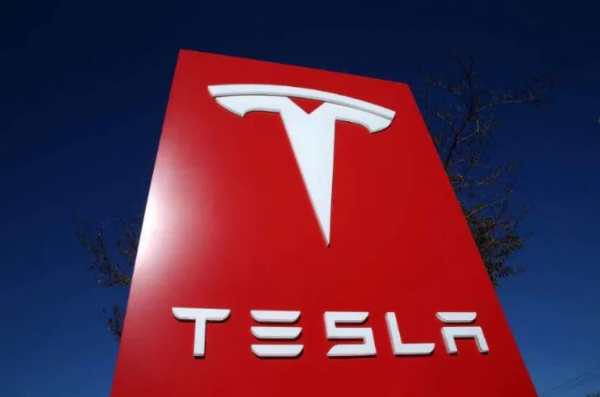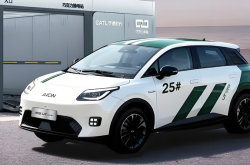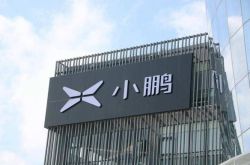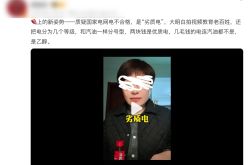New Energy Vehicle Makers Encircle Tesla: Who Will Reign in 2025?
![]() 01/23 2025
01/23 2025
![]() 590
590

The auto industry's competitive spirit intensified at the dawn of 2025, with Tesla at the helm of this round of turmoil.
Since its debut in 2019, Tesla's Model Y has gone unchanged for five years. Recently, Tesla abruptly unveiled a revamped Model Y, boasting significant enhancements in design, interior, range, safety, and intelligence. With a bold proclamation, "Come and compare—only the new Model Y can surpass the old one," Tesla has stirred up a hornet's nest.
This brazen statement has sparked considerable controversy, prompting automakers to respond swiftly. Lei Jun, founder of Xiaomi Automobile, was the first to chime in with a simple "Okay," followed by ZEEKR, Ledao Automobile, AITO, and Lynk & Co. Yu Chengdong, Chairman of Huawei's Intelligent Automobile Solution BU, also commented on his WeChat Moments, "According to the data, Zhijie R7 still maintains a leading edge! Once we get the actual car, we'll compare Zhijie R7 thoroughly!"
From the second half of 2024, these automaker brands successively launched models positioned similarly to Model Y, forming a "siege" around Tesla's flagship SUV. At that time, Tesla remained silent, but unexpectedly made a "big move" at the beginning of 2025.
Although Model Y's sales remained robust last year, with an annual sales volume of 480,000 units, making it the best-selling model across all car types in China, Tesla's overall sales declined for the first time. With domestic automakers rapidly catching up, particularly in intelligence and comfort, Tesla can no longer rest easy amidst this multi-faceted siege.
Encircling Tesla
The domestic new energy vehicle market surged ahead in 2024, with the penetration rate of new energy passenger vehicles exceeding 50% for consecutive months and annual production and sales volumes surpassing 10 million units, setting a new record.
Amidst this rapid progress, competition in the automotive market has gradually intensified. To produce more market-competitive products, companies have unanimously targeted the sales champion—Model Y.
Especially after the Model Y update, it became a bestseller amidst both recognition and skepticism, making its benchmark significance even more pronounced. Some stores sold 300 units in a single day, and even third-party statistics revealed that the pre-order volume of the new Model Y reached 50,000 units on the first day of its launch, surpassing the monthly sales of many new automakers.
Therefore, during the peak sales season of "Golden September and Silver October" in 2024, the six major brands of new carmakers all launched SUV models with similar positioning. Especially in September 2024, five models targeting Model Y were launched within a week.
First, on September 19, 2024, NIO's Ledao L60 was launched, claiming that Ledao L60 is a deluxe and larger version of Tesla's Model Y; the next day, Geely's ZEEKR 7X was unveiled, targeting Model Y; on September 24, 2024, Zhijie R7, jointly created by Huawei and Chery, was launched and is considered the strongest competitor to Model Y; two days later, SAIC and Alibaba jointly launched the all-new IM LS6 and Changan Automobile's AITO 07 on the same day; on October 13, 2024, Dongfeng Motor's Lantu Zhiyin was launched, and Lantu CEO Lu Fangfang declared, "Our car surpasses Tesla's Model Y in all aspects."
Thus far, the six major brands have encircled Model Y, and this battle has been jokingly referred to within the automotive industry as "the six sects besieging Guangmingding."
Specifically, as NIO's second brand, Ledao L60 focuses on high-end offerings while also providing good value for money. In particular, its unique battery-swapping model gives it a differentiated competitive advantage in the competition with Model Y.
ZEEKR 7X boasts advantages in areas such as the 800V high-voltage platform, charging speed, and chassis suspension, with deliveries exceeding 20,000 units within 50 days of its launch.
Zhijie R7 is the only model in the "encirclement faction" with a pricing higher than Model Y. On one hand, it offers both pure electric and extended-range dual power modes, providing consumers with more choices; on the other hand, equipped with Huawei's ADS intelligent driving system, Zhijie R7's intelligent driving level is top-tier.
Although IM LS6 is not a new model, it has undergone many upgrades compared to the previous model in terms of intelligent driving systems, intelligent cabins, comfort, and space practicality.
Like Zhijie R7, AITO 07 also offers both pure electric and extended-range dual power modes and is equipped with Huawei's intelligent driving system. Its design focuses more on a youthful and futuristic feel.
Lantu Zhiyin is the model with the lowest starting price in the "encirclement faction," dipping below the 200,000 yuan price range to just 196,900 yuan.
From the above, we can see that the six major brands have all brought out their own killer moves in targeting Model Y. At that time, Tesla remained silent, but this year's Model Y facelift and the declaration of "come and compare" can be seen as a distant response to last year's encirclement layout.
Since its launch in 2019, Model Y has gone unchanged for five years. With more and more competitors, Model Y has also "become restless." This facelift includes upgrades in design, interior, range, safety, intelligence, and other aspects. The design language adopts the style of Tesla's CyberCab, an autonomous taxi, and the range has been increased to a maximum of 707km. It also keeps up with current trends by adding an 8-inch touchscreen in the rear row, among other things.
Where Does the Confidence in Encircling Come From?
Undoubtedly, Model Y is a dominant force in the new energy vehicle market. It was first launched in 2019 and domestically produced in 2021, maintaining a hot sales status in these years.
Even though Model Y has gone unchanged in the five years since its launch, its monthly sales in 2024 were still at the level of 40,000 units, with annual sales reaching 480,000 units, making it the best-selling model across all car types in China.
Despite this, new carmakers still dare to directly compete with Model Y, trying to secure a share in the fiercely competitive market. Where does the confidence of these automakers in encircling Model Y come from?
First, as the technological foundation of new energy vehicles, domestic battery, motor, and electronic control (BME) technologies are already at the international advanced level. A complete supply chain and industrial chain system provide strong support for domestic cars, enabling them to have higher cost-effectiveness advantages in cost control and product quality.
In terms of product capabilities, automakers have packed in luxury configurations such as refrigerators, TVs, and large sofas, paying more attention to large spaces and sizes to meet the needs of family travel and comfortable experiences. This has almost transformed Chinese consumers' perception of automotive product capabilities, extending from original single performance parameters to a richer driving experience.
Intelligence is another key area where automakers are investing heavily. High-performance computing chips, advanced operating systems, and large-size touchscreens are widely used, integrated with high-level intelligent driving assistance systems, dedicated to bringing users an ultimate technological interaction experience.
Especially in intelligent driving, domestic automakers have achieved two "end-to-end" capabilities. One is to get rid of the dependence on high-precision maps technologically and achieve NOA without maps; the other is to achieve a parking space-to-parking space experience.
Moreover, domestic automakers have greatly expanded the automotive experience to outdoor scenarios, with innovative applications such as outdoor discharging, exterior projection, and exterior gimbal cameras, satisfying consumers' diverse needs for automotive functions, especially attracting many young consumers.
In addition, domestic automakers also have obvious advantages in long-range capabilities. Under the 800V electrical architecture, they not only meet long-range needs but also improve charging efficiency.
Generally speaking, Chinese consumers' vehicle usage scenarios include daily commuting and long-distance travel. These advantages of domestic automakers stem from a deeper understanding of Chinese consumers' pain points and joys in vehicle usage.
In summary, the reason why automakers dare to compete with Model Y is precisely because they have made considerable progress and breakthroughs in BME technology, product capabilities, intelligence, and range, and have accurately grasped the needs of the Chinese automotive market, tightly holding onto consumers' concerns.
The Battle of Encirclement: What Are the Chances of Winning or Losing?
In the short term, the domestic automakers' results in this battle of encirclement are still difficult to call successful. From the sales data for the just-past December 2024, it can be seen that among these models, ZEEKR 7X performed better with sales of 27,000 units, Zhijie R7 sold 15,000 units, Ledao L60 sold 10,000 units, while Tesla's Model Y sold more than 60,000 units, showing a very obvious gap.
It is undeniable that Model Y has the first-mover advantage of entering the market early, and Tesla's brand power and Elon Musk's personal influence have brought it many endorsements and loyal followers.
However, Zijin Finance has also observed that Tesla's sales have declined to some extent under the pressure of independent brands and new carmakers. The latest data released by Tesla shows that in 2024, Tesla produced a total of 1.7734 million vehicles and delivered 1.7892 million vehicles, a decrease of 1.1% compared to the 1.81 million vehicles delivered in 2023.
This is the first time Tesla has experienced a year-on-year decline in annual sales since 2015, and it is also lower than analysts' general expectation of 1.8 million vehicles. Tesla CEO Elon Musk previously stated in a financial report meeting that Tesla's sales in 2024 would be slightly higher than those in 2023, achieving "slight growth."
Obviously, this is a signal that cannot be ignored, which may mean that Tesla's leading edge is being eroded.
Especially in the Chinese market, under the encirclement of new models from many automakers, although it is impossible to shake Model Y's sales champion status in the short term, they are in the early stages of capacity and delivery ramp-up. As capacity and delivery further increase, the encirclement of Model Y will only become more intense.
Especially with the rapid pace of automakers' updates and iterations, they have made great efforts in technology, innovation, service, quality, and other aspects. Some technologies and applications have already taken the lead in the industry, and even Tesla's latest facelift of Model Y could not avoid needing to "catch up on homework."
Although it can catch up on homework, Tesla's killer move—Full Self-Driving (FSD)—has always been unable to enter China. As intelligent driving increasingly becomes an important reference factor for consumers when buying cars, this impact is becoming more and more profound. The industry consensus is that the second half of the new energy vehicle market is a competition of intelligence, especially high-level autonomous driving, which is bound to become one of the decisive factors affecting product capabilities.
Objectively speaking, Tesla is also actively promoting the entry of FSD into China. Last April, Tesla CEO Elon Musk discussed with China the launch of FSD software in the Chinese market, but to date, there is still no news of its implementation. Considering sensitive issues such as data security and privacy protection, the entry of FSD into China will not be easy.
In terms of price, the high cost of FSD makes it difficult for it to be popularized on a large scale. High-level intelligent driving systems from independent brands, such as HarmonyOS Intelligent Drive, XPeng, and Li Auto, are generally priced at 20,000 to 30,000 yuan, while Tesla's FSD is priced at a high 64,000 yuan. Even if FSD smoothly enters China, such a high price will make it difficult to quickly gain popularity.
The current automotive market competition is fierce, and it is a case of swimming against the tide—not advancing is retreating. Although the product capabilities of domestic automakers have not yet threatened Tesla's dominant position, as the domestic automakers' systems continue to mature, their product and technology accumulation will also become deeper. In time, the balance of victory and defeat will inevitably tilt.
Conclusion
Kings have their own paths, and disruptors have their own strengths.
In 2025, with the successive launches of models with similar positioning to Model Y, such as Xiaomi YU7, XPeng G7, Geely Galaxy Starship 9 EM-i, and BYD Tang L, the members encircling Tesla will increase. Under the encirclement of multiple parties, it remains unknown how long Tesla can remain at the top. What is certain is that this is a drama worth watching.





